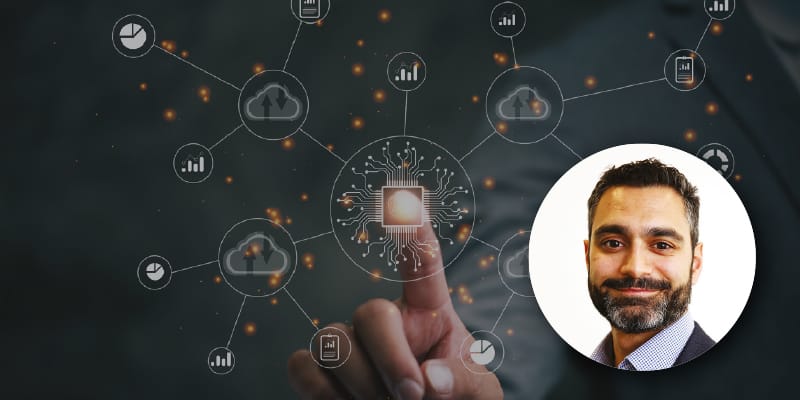What is digital transformation? It can mean everything to a company but if it’s not broken down and made into something that both customers and colleagues can understand and get behind, it can become another meaningless buzz word that we merely pay lip service to.
When I joined Karbon Homes as assistant director of ICT and digital transformation in March 2020, we had just added ‘digital transformation’ to my title. We’ve made significant progress since then yet our journey towards digital transformation has still only just begun.
Getting the basics right
Digital transformation isn’t about implementing the newest, most advanced and innovative systems; in fact, that would just send some of our colleagues and customers running in fear. Instead, it’s about strengthening our digital foundations and getting the basics right, ensuring the needs of our colleagues and customers are met. We began with how we provide IT services for our colleagues.
The first stage of our digital transformation journey focused on hardware. That included a complete refresh of our end-user computing networks and planning our migration to cloud services.
Everyone needs to interact with some form of hardware in order to engage digitally, so ensuring our colleagues had the right devices for their jobs and that our systems behind the scenes were all up to date and fit for purpose was the obvious starting point.
Varied hardware requirements
In common with most housing providers, Karbon Homes’ workforce comprises a variety of office- and field-based roles. This diversity forced us to focus on which technologies were right for different colleagues. A roll-out of laptops was never going to work for everyone; we also needed large-screen phones for our trade colleagues, quality tablets for those doing servicing and checks, and mobile devices with high-quality cameras for housing officers who need to take photos regularly.
The handover process, albeit rather daunting because it involved the exchange of around 1,500 devices, was the perfect opportunity to take our colleagues on the journey with us and get them behind what we were trying to achieve. Self-service was prominent, with everyone encouraged to set up their own devices and work through back-to-basics study guides to ensure they were comfortable with the devices and apps’ functionality.
At the same time, our day-to-day collaboration tools, such as email, chat and document sharing, needed to become more embedded in people’s working practices so that collaboration via their new devices became a regular activity for everyone.
We already had the Microsoft Office365 suite so it was a case of raising our colleagues’ awareness of its capabilities and making the most of the tools available to stimulate digital collaboration.
We did this via a digital champions education programme, providing 18 months’ training on our Office365 and Power platforms for the digital champions and then empowering them to pass on their skills to colleagues. It quickly became clear that there were a few who really embraced this role and loved getting the badges to show progress but, as we expected, it didn’t quite go far enough in ensuring all colleagues were getting the most from the tools.
‘Get back 30’ programme
We are now in the second phase of extending our use of Office365 and have established a ‘Get Back 30’ project. Its aim is to help colleagues get back 30 minutes per week by digitising or automating their regular activities. We’re approaching this department by department, asking them to suggest what could be digitised or automated within their teams.
We have now created a product backlog and we’re delivering the ‘Get Back 30’ outputs through Agile sprints and releases, supporting our cultural shift towards product management and agile delivery.
Better digital habits
We’re also running a series of ‘digital habits’ sessions to support our ‘Get Back 30’ campaign. Over a 10-month period, we’ll deliver five themes where our colleagues can learn a simple digital habit to make them more efficient.
An example is our ‘collaborate’ theme. One habit is to avoid attaching files to emails and instead sharing them via OneDrive or SharePoint, meaning both parties can both work on the same file and no longer need to pass multiple versions back and forth. Habits like this might seem very straightforward but we need to encourage the adoption of these basic habits first before we can take our people further along our digital transformation process.
The last building block in our digital foundations was improving the hardware in our offices and networks. With docking stations, screens and a new gigabyte software-defined WAN, we’re ready for hybrid ways of working. We’re also trialling Microsoft Teams-specific meeting rooms, providing space away from the main desks for colleagues to join remote meetings.
Now we have these hardware foundations, we’re looking at applying cloud migration to infrastructure-, platform- and software-as-a-service. We’ve just moved our telephony and contact centre solution to unified communications-as-a-service and contact centre-as-a-service with help from IT supplier 8×8.
Stronger foundations
It’s an exciting time for us. Digital has become a key element of how we do things at Karbon Homes and it plays a key role in our ‘stronger foundations strategy’ over the next five years.
When it comes to successful digital transformation at an organisation like ours, it really is about playing the long game, starting strong and keeping our focus on the customer and colleague experience.
Nathanial Ray is the assistant director of ICT and digital transformation at Karbon Homes.


